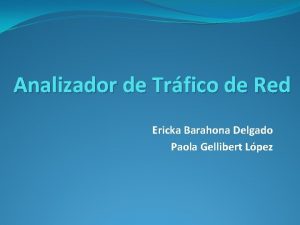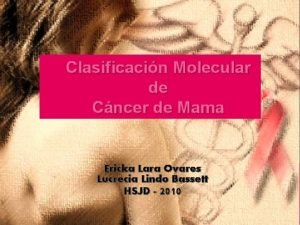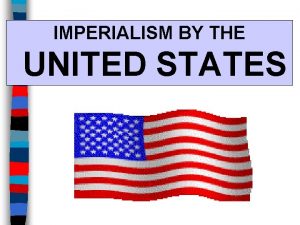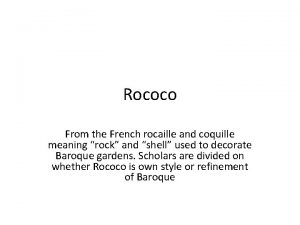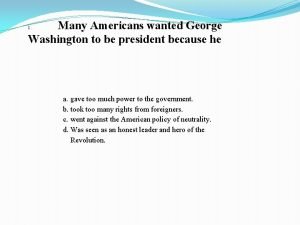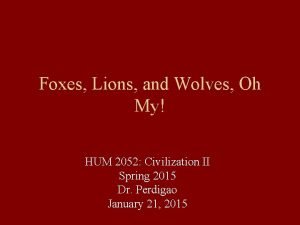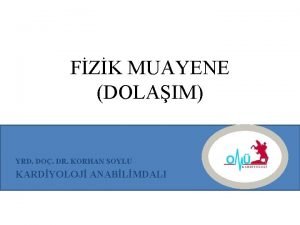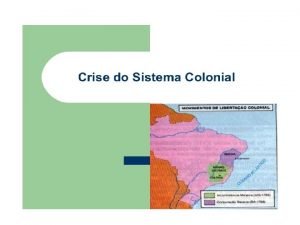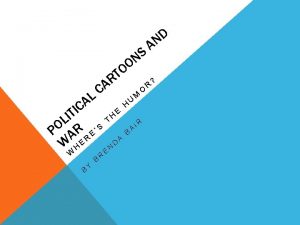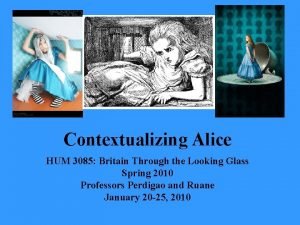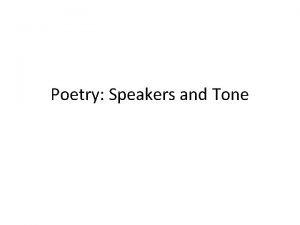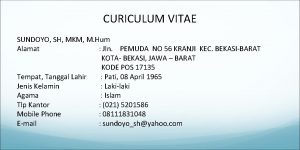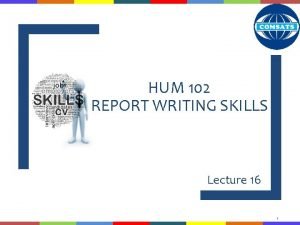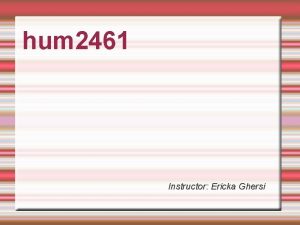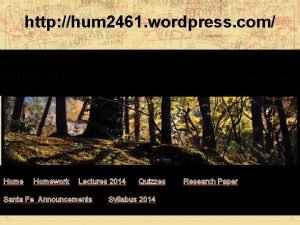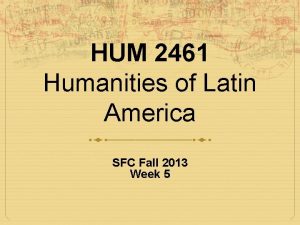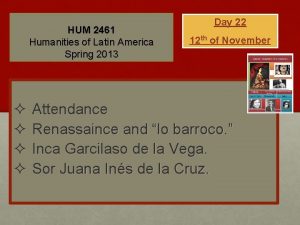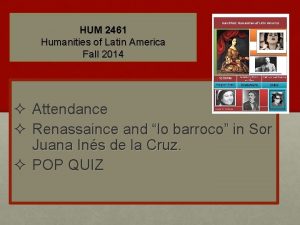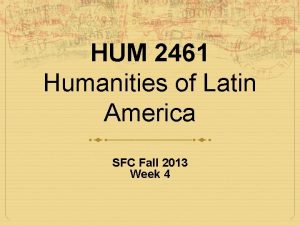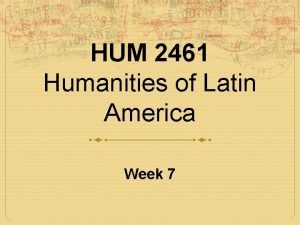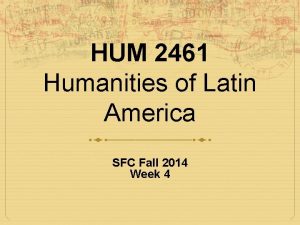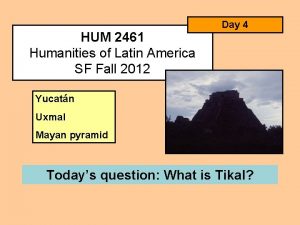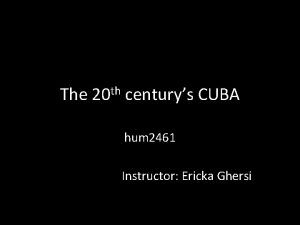Latin America in 1790 Hum 2461 Instructor Ericka








![Main conquistadors Hernan Cortes (New Spain): WANTED [2. 5 million of dollars] Francisco Pizarro Main conquistadors Hernan Cortes (New Spain): WANTED [2. 5 million of dollars] Francisco Pizarro](https://slidetodoc.com/presentation_image_h2/a5c230cb1a9aa2e5821286f62c609fde/image-9.jpg)







- Slides: 16

Latin America in 1790 Hum 2461 Instructor: Ericka Ghersi

Introduction Meaningful events: The revolutions of 1788 and 1789. North America separated from England (1788) The French revolution (1789) Ideas of free trade and anti-monarchical republicanism were stirring a new generation of Creole nationalists. The Bourbon Reforms began in mid-century, reached full force by 1790.

Colonial Background Imperial Agencies and Interests: 1. Casa de la Contratación (Trade and Shipping) 2. Consejo de Indias (Advisory Council) 3. The third interest was to establish a slow, deliberated, careful and bureaucratic control over the American empire. 4. Other of the main interests was to disperse the power. Power should not be in hands on one institution or person, but many.

Imperial Agencies Casa de la Contratación (Trade and Shipping) 1. Trading house located in Seville. It was inteded to be lucrative and tightly controlled by the crown (monarchy). 2. A passage of people between Spain and the New World. 3. Regulated ships until 1532.

Imperial Agencies Consejo de Indias (Advisory Council) 1. Castile will be controlling the New World. 2. The monarchy established Cde. I to transmit and express to the New World the Monarchy’s desire (rules). 3. It was conciliar and non-representative government. 4. Work for it close people to the monarchy such as “Letrados”.

http: //hum 2461. wordpress. com/lessons/ SPANISH ADMINISTRATION IN THE NEW WORLD

How was organized the Colonial Administration in LA? Land Human labor Economical and political regulations

In that senses… Latin America was facing a monarchy state. Therefore it was authoritarian. Aristocracy was fake because it was based on robbery.
![Main conquistadors Hernan Cortes New Spain WANTED 2 5 million of dollars Francisco Pizarro Main conquistadors Hernan Cortes (New Spain): WANTED [2. 5 million of dollars] Francisco Pizarro](https://slidetodoc.com/presentation_image_h2/a5c230cb1a9aa2e5821286f62c609fde/image-9.jpg)
Main conquistadors Hernan Cortes (New Spain): WANTED [2. 5 million of dollars] Francisco Pizarro (Peru): Got from Atahualpa 17. 5 million of dollars Helpers: Soldiers got 500 pieces of gold

Encomienda 1. Cacique or Curaca 2. Corregidor (Maria Escobar & Ines Suarez) 3. Monarchy outlawed Indian slavery in 544.

Incas Land: Concept of property Spaniards Shared property (AYLLU) Private property Ayllus were the basic political and social units of pre-Inca and Inca life. These were essentially extended family groups but they could adopt nonrelated members, giving individual families more variation and security of the land that they farmed. “Land was the major economic source, the major determinant of social status, and the major source of political power. ” (Rogin 29) “[R]egional monopoly of good land […] was effective way of limiting production & controlling prices. ” (Meade 29)

Land /Ayllu Led by a chief (Curaca) but could have other political arrangements. Ayllu were self sustaining units and would educate their own offspring and farm or trade for all the food they ate, except in cases of disaster such as El Nino years when they relied on the Inca storehouse system. Their primary function was to solve subsistence issues, and issues of how to get along in family, and larger, units. Each ayllu owned a parcel of land, and the members had reciprocal obligations to each other. In marriages, the woman would generally join the class and ayllu of her partner as would her children, but would inherit her land from her parents and retain her membership in her birth ayllu.

Bourbon Reforms or The Enlightment century 1. Intendencies (Intendant) (p. 34) 2. Consulados (p. 34) 3. Elimination of La Casa de Contratación (Board of Trade. ) ALCABALA, new system of taxes. 4. Creation of more ports in Spain to colonial trade. Therefore destruction of the Andalusian aristocracy (Seville). 5. Jesuits were expelled.

Agents of the Reform Jose Galvez (Spanish minister of the Indies, 1776) Reorganized the system of tax collection. Consolidate mercantile affairs. Imprison corrupt tax officials. Centralize economy in mining enterprises. Revolutions: Rebellion of Tupac Amaru II in 1780 -1 Comunero Revolt in New Granada in 1781.

Agents of the Reform 1. Marquez de Pompal (Portuguese crown) 1. Encourage intermarriage between whites and Indians. 2. Solidified the oversight of tax collection. 3. Regulated th inspection of of goods coming in and out. 4. Reinforced the dominance of the Portuguese Board of Trade. TRANSITIONAL FIGURES

Disorder and Rebellion Creoles were cut of the colonial monopoly. Participants of civil disorders were from different social strata. Watch “El Machete” at the library (under hum 2461)
 Why is called latin america
Why is called latin america Sfc-2461
Sfc-2461 Ericka castro pack
Ericka castro pack Ericka greene md
Ericka greene md Ericka lara
Ericka lara Imperialism
Imperialism Coquille rococo
Coquille rococo Americans wanted george washington to be president because
Americans wanted george washington to be president because 1790 foreign policy
1790 foreign policy Oh so hum
Oh so hum Juguler ven pulsasyonu
Juguler ven pulsasyonu Conjuração mineira resumo
Conjuração mineira resumo Ho hum when he's finished pecking cartoon meaning
Ho hum when he's finished pecking cartoon meaning Alice hum
Alice hum Speaker poetry definition
Speaker poetry definition Mkm m
Mkm m Hum 102
Hum 102


